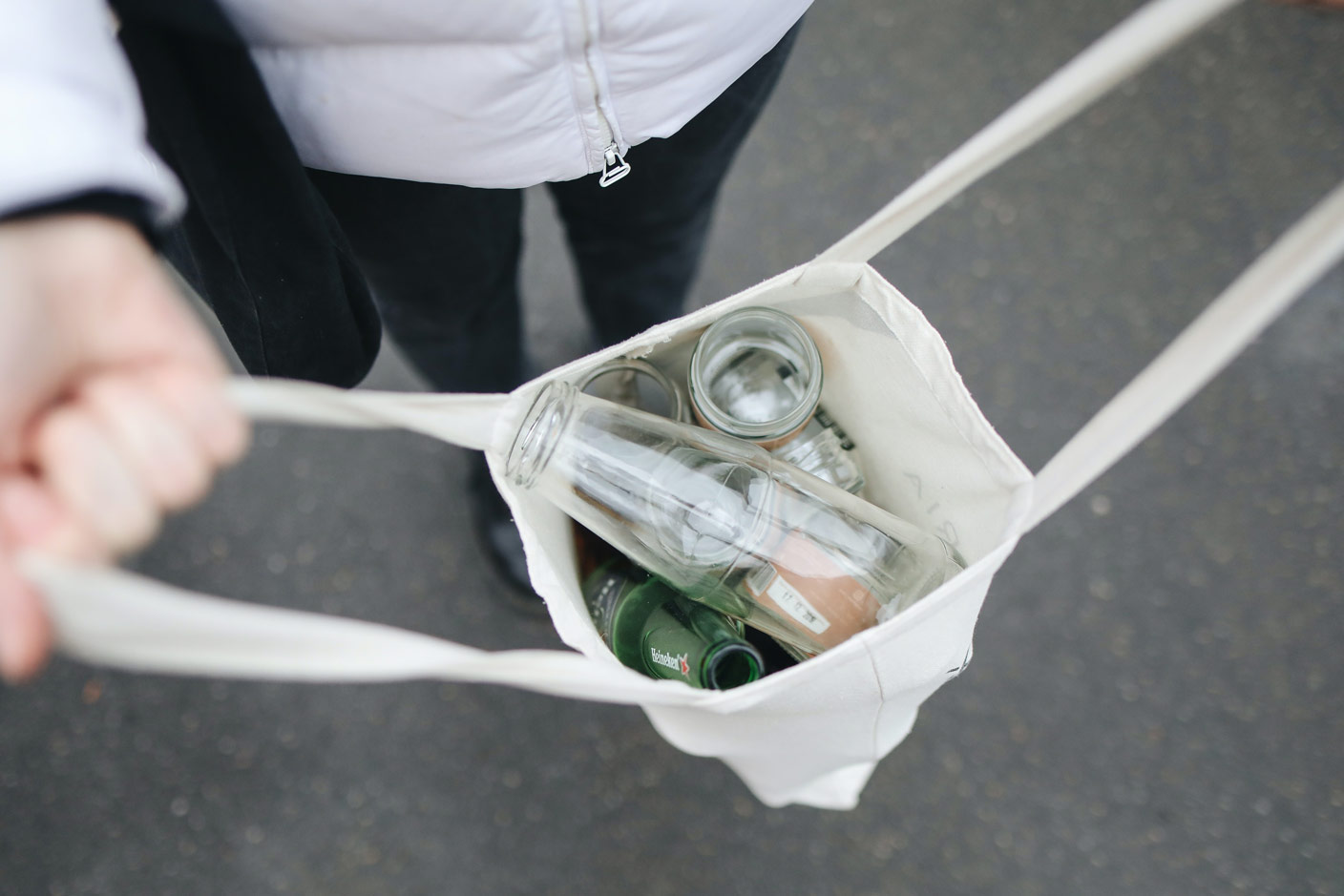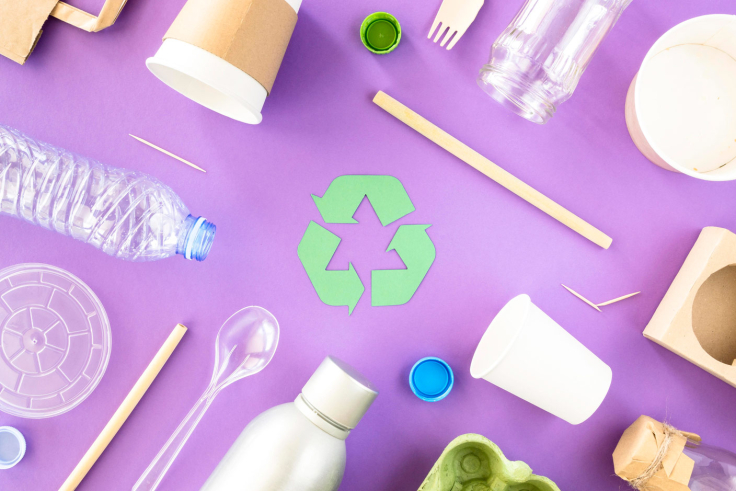Talk about saving the planet is commonplace nowadays. But is climate change really that important? You might think that one person’s actions couldn’t possibly have an effect on the overall situation, especially since there’s so much waste being produced every hour. However, it’s incredible how small steps can become giant leaps!
In this article, you can learn about the benefits of adopting a more eco-friendly lifestyle, including 18 tips on how you can go green today! There is no need to go vegan or throw out all of your plastic stuff right away. We will teach you how to make this transition smoothly. Plus, no student should ignore an opportunity to save some cash, and a sustainable lifestyle is much cheaper!
🍀 Going Green: Why Should I Start Now?
You might be wondering how becoming more eco-friendly can benefit you. It’s true that going green will help the planet, but it can improve your own life as well! Let’s be a bit selfish for a moment and see what you can get out of switching to this lifestyle.
- Going green is cheaper. Trying to save up for a dream vacation, but you just can’t make it happen? Go green! You’ll immediately start saving money.
- First of all, choosing reusable items allows you to save on disposable ones. For example, some coffee shops offer discounts for bringing your own cup!
- Recycling is another great opportunity to save some cash. There are tons of DIY videos that demonstrate how to make fantastic decor out of plastic waste.
- Finally, reducing the consumption of electricity and water in your home can shrink your bills significantly! You will learn about those tricks in the next section, but it already sounds promising, doesn’t it?
- Going green is healthier. Have you ever wondered what kind of ingredients make up your deodorant or face cream? Most mass-produced skincare and household products contain chemicals and toxins that we breathe in and absorb on a daily basis. Switching to eco-friendly options reduces your exposure and boosts your overall health. Meanwhile, grabbing your bicycle instead of a car to get to work increases your physical activity. Choosing green transit alternatives keeps you in shape and decreases air pollution.
- Going green is the way to be happier. Doesn’t it feel great when you do random acts of kindness? Even when it is something small, your heart starts dancing, and your face starts smiling as you think about the person you just helped. Imagine how nice it must be to help out the whole planet and secure a promising future for the next generation! And that is precisely what you will be doing by going eco-friendly!
♻️ 18 Tips to Become a Sustainable Student
In this section, we have collected 18 tips to help you start your eco-friendly journey. This advice is especially useful for students who are on a budget. There are six sections, so you can choose where you want to start. Everyone is different, so pick the things you feel most comfortable with! By the way, we have a lot of college essay examples about sustainability. You might want to check them out if you’re interested in the topic.

Recycle
When you step out on the green path, you probably start wondering what to do with all the waste that has already piled up in your home. Simply throwing it away won’t do any good. You need to get rid of unnecessary stuff responsibly.
- Leave your recyclables at the curb or bring them to a recycling center. The recycling system available to you will differ according to your household and neighborhood. It is best to simply ask your neighbors how they recycle. You will most likely need to sort the recyclable waste and put it out in separate bins or colored trash bags. If that is not an option, try to look for designated spots like a nearby recycling center that will accept any type of waste.
- Buy things made of recycled materials. Sometimes you might see a special sign on an item saying that it was made out of recycled materials. This isn’t as common as we would like, but do your research and try to look for eco-friendly shops in your area. Cutlery, clothes, and even furniture are made of recycled materials. Plus, they tend to be cheaper. You just need to take the time to look for them!
- Take part in programs offered by universities. More and more educational institutions are beginning to adopt eco-friendly policies. For example, the University of California has many programs that aim for more sustainable living, like reducing landfills and food waste. Reach out to your university to find out about similar projects!
Try Reusable Things
One of the greenest tips for students, which is also a real money-saver, is investing in reusable products. People have been doing this for hundreds of years, but we changed our habits significantly after the invention of plastic. Now, it’s generally easier to use disposable items, but it is not sustainable for our planet.
- Try reusable bags. Do you remember how many times you’ve bought plastic bags for your groceries at the store? And what about all the times you ordered takeaway? That trash piles up in your place and eventually ends up in a landfill or in the ocean. Instead, you can carry a reusable cloth bag with you at all times! Buy or make one yourself. Some shops even offer discounts when you bring your own grocery bag!
- Avoid plastic water bottles. Plastic water bottles are single-use items because only a trace amount of them can actually be recycled. So why not buy yourself a nice personal water bottle? They come in a variety of shapes, colors, and materials. Then, you only need to look for drinking water fountains or use a filter if you have one at home!
- Try reusable coffee filters. Coffee-lovers will understand how annoying it is when you run out of filters without warning. However, this problem is easy to avoid if you buy a reusable filter for your coffee machine! It will save you money and effort since there will be no need to remember to buy disposable ones.
- Use cloth napkins instead of paper (repurpose old towels and t-shirts). What do we usually use after spilling some tea on the table? We reach out for the paper towels or napkins that are always in our kitchen and living room. A great alternative is cloth napkins. You can cut up old towels or t-shirts, which are just as absorbent as paper napkins. And they are even more colorful and cheaper than the commercial ones!
Decrease Your Use of Paper
At the beginning of the school year, you probably buy at least one thick notepad for each of your classes, which can be pretty expensive. Yes, paper can be recycled, but it requires a lot of energy and time. Isn’t it better to just prevent the issue before it occurs?
- Take notes electronically. This is one of the most convenient eco-friendly tips for college students. Every year you buy notepads for every course you take, and at the end of the year, they end up in the trash. Taking notes on your electronic devices is a much cheaper, more sustainable, and more convenient option. No need to spend money on paper, and all your notes stay in one place!
- Pay your bills online. Paying the bills comes with a lot of paper waste. In the age of technology, there is an easy solution to that. Pay your bills online if that option is available to you. Only a few clicks and no paper!
Save Energy
For an eco-friendly beginner, this section might come as a surprise. However, you can make your home more sustainable with a few simple changes. By using some of the tricks that we talk about below, you’ll be able to save money and make a contribution to our planet’s wellbeing!
- Do a home energy audit. There are professionals that can do this more thoroughly, but it is possible to find and address some issues yourself. Walk around your house and try to identify the spots that can be improved in terms of energy sufficiency. Some of those include air leaks, ventilation, insulation, heating, and electronics. Heat loss is a real thing, so reducing drafts can be a great help. Old buildings should be inspected even more closely. Out-dated equipment such as heating and cooling systems might need to be replaced as well.
- Check the settings of your devices. Laptops are a more energy-efficient option than personal computers. However, you should still check the settings on all of your devices, such as tablets and smartphones. Switching to an energy-saver mode not only saves energy but extends battery life as well. Another sustainability tip for college students is to regulate their sleep schedule! Just imagine how your electricity bill goes up whenever you fall asleep in the middle of a movie! That bright screen stays on while you are napping.
- Use energy-efficient lightbulbs. Any standard bulb can be replaced with a more efficient option. The most eco-friendly options are LEDs. You have probably already heard about how they last much longer and consume less energy. When you’re picking some up at the store, look into the bulb’s brightness. There are also additional controls, such as timers, that can reduce energy consumption.
Use Second-Hand Things
This is a great option when you are trying to save some cash. Indeed, you can even find name brand clothing in second-hand shops. This approach is much greener than the consumerism that is encouraged by our society.

- Buy second-hand clothes or make your own. Do you know how much water and energy is needed to produce one pair of jeans? A lot! Growing cotton, dyeing fabric, and washing garments are not possible without thousands and thousands of gallons of water. So why not help our planet and buy a pair of jeans from a thrift shop? The clothes there are generally in excellent condition and extremely cheap. You can even find name brands at these stores. Another option is customizing your old clothes by cutting and dyeing them.
- Get used furniture for free. Furniture is one of the most expensive consequences of moving into a new place. As a tenant, you might have to rent an empty or only partly-furnished place. If you need to fill your space, we suggest looking for local sources that give out second-hand pieces for free or for a small fee. People often move out and post about garage sales, which are great opportunities to get second-hand goods.
Use Eco-Friendly Transportation
In the last decade, the number of sustainable transportation options has increased significantly. This means that students do not necessarily need a car when they go to college. Some of the ideas below are relatively cheap and have a much smaller pollution footprint.
- Use a bike. Using your bike is one of the best tips about how to be sustainable in college. Bikes are free to use, eco-friendly, healthy, and convenient. They do not produce any emissions, so they are the greenest choice. Plus, it is easier to avoid annoying traffic jams on your bike!
- Try a hybrid vehicle. If you prefer your car’s comfort and privacy, then consider getting a hybrid or electric vehicle. With such rapid development in recent years, there are many budget options on the market. Do some research and get the one that best suits your needs!
- Walk more. How simple is that?! Look for different routes to your destination if it is not too far away. Walking is the cheapest and healthiest option from this list. This additional physical activity will be especially beneficial for students who spend most of their time at a desk.
- Use public transport. More people using public transport means fewer traffic jams and air pollution. It’s a great idea to choose a bus over your car every now and then.
📈 Eco-Friendliness Tips: Infographic
In this infographic, you will find the same tips we’ve discussed above. But who needs to read the whole article if they can look at one short and easy-to-use list, right? So you’ll want to bookmark this page so that you can go straight to this section and have the infographic on hand when you want to explore your options for going green!


![200 Interesting Historical Events to Write About [New Tips]](https://ivypanda.com/blog/wp-content/uploads/2020/05/medieval-knights-battle-field-309x208.jpg)

